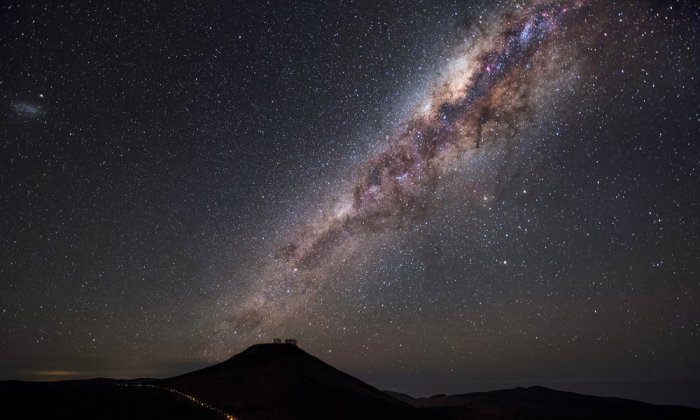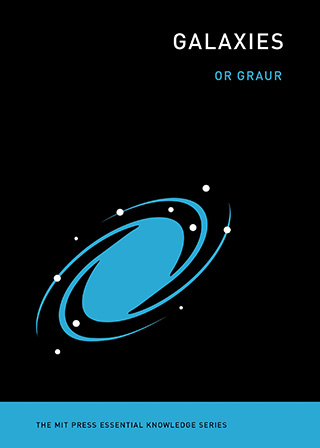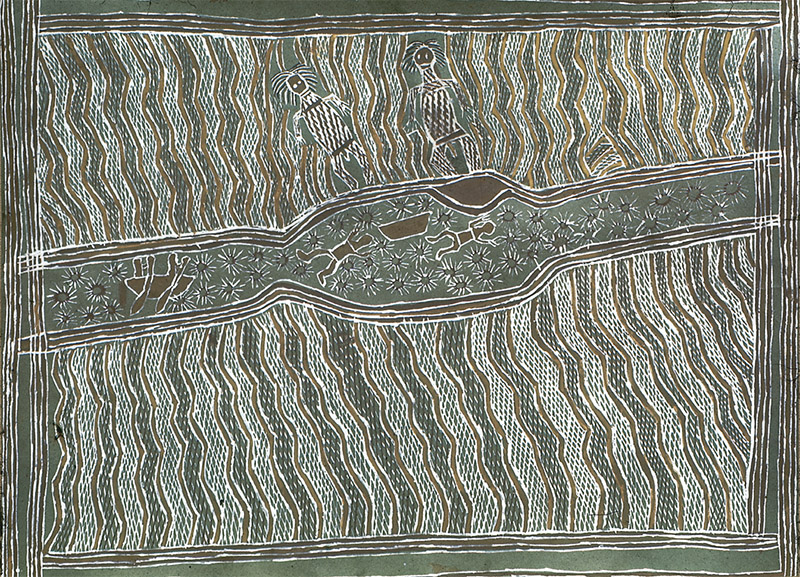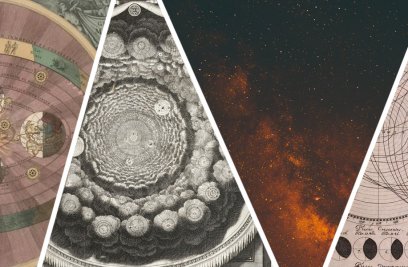The Myths and Lore of the Milky Way

Before our cities lit the night and banished the stars, a gauzy band of faint light and shadows vividly cleaved the night sky. Our name for this band, “Milky Way,” originates in Greek mythology. Heracles, it is told, was born to Zeus following one of his many infidelities. To grant him protection and superhuman powers, Hermes snuck Heracles up to Olympus and placed him at Hera’s breast as she slept. But when Zeus’s wife woke up and realized what had happened, she flung the baby from her breast and some of her milk spilled out across the heavens. Hence the Greek term kuklos galaxías (κύκλος γαλαξίας), or “milky circle.”

The Greeks also saw in the Milky Way a road traveled by either the Sun or the gods. The Romans, who were heavily influenced by Greek culture, also thought of the Galaxy as a road traveled by the gods and called it Via Lactea — “milky way.” Roman writers also adopted the Greek word galaxías, which then made its way through medieval Latin into English.
The ancient Greeks and Romans were not the only peoples to see the Galaxy as a road. Of the different names for the Galaxy in Arabic, for example, the most common one is “The Straw Way” (درب التبانة—Darb al-Tabānah), after the sheafs of straw dropped by farmers on their way back from the fields. Spread by trade, religion, and conquest, this name is now found in many languages throughout Central Asia and northern Africa.
Neighboring countries often share similar names for the Galaxy. In Spain and Portugal, for example, the Milky Way is known as “The Road to Santiago” (Camino de Santiago), as it guided Christian pilgrims on their way to Santiago de Compostela. Meanwhile, in Finland, Estonia, and several Baltic states, birds migrating south for the winter seem to follow the arc of the Galaxy, which is called the “Birds’ Path” (e.g., Linnunrata in Finnish or Paukščių Takas in Lithuanian).
In many cultures, the Milky Way is more than just a road — it is a conduit between this world and the next. This conception of our Galaxy is found among many of the peoples of North America, from the Lakota “Spirit Road” (Wanáǧi Thacháŋku) to the Cheyenne “Hanging Road” (ekutsihimmiyo).
The ancient Egyptians may have held a similar belief. Nut, the sky goddess who swallowed the Sun at dusk and gave birth to it once more at dawn, also served as a ladder for the spirits of the pharaohs to climb up to the sky. Her arched, often star-studded body adorns sarcophagi and tomb walls, and is thought to be a depiction of the Milky Way.
Roads are not the only motifs found among the many names of the Milky Way. Rivers were the lifeblood of many cultures, so it is not surprising to find that those cultures viewed the Galaxy as a celestial river. The great rivers of India, China, and South America, for example, all have celestial counterparts.
In India, the Milky Way is known as the “Heavenly Ganges” (आकाशगंगा—ākāśagaṅgā) and stretches across the belly of a cosmic dolphin. In China, the Silver River (銀河—yínhé) separates the Cowherd (牛郎—Niúláng) from his wife, the Weaver Girl (織女—Zhīnǚ). The star-crossed lovers, symbolized in the night sky by the stars Vega and Altair, can only meet once a year, on the seventh day of the seventh lunar month, when a flock of magpies temporarily forms a bridge across the heavenly river.
The star-crossed lovers can only meet once a year, on the seventh day of the seventh lunar month, when a flock of magpies temporarily forms a bridge across the heavenly river.
Andean peoples of South America, including the Quechua and Aymara, believe that all terrestrial rivers flow into the celestial river, Mayu, which then replenishes them. The Mapuche, who live in Chile and Argentina, also think of it as a river of stories (Repeu apeu).
From rivers we turn to animals, which figure in many myths and creation stories. A Hawai’ian tale recounts how the demigod Ka-ulu flung the Chief of Sharks into the sky, where his shattered body formed the Milky Way. Variations of this story are found throughout the island nations of Oceania. To the Māori, all the way on the other side of the Pacific Ocean, it is Māui who placed the shark, Te Māngōroa, in the sky.
The Andean people of South America see “dark constellations” in the shadowy parts of the Milky Way: a snake, a toad, a tinamou bird, and a llama suckling her baby. On the other side of the world, the most famous dark constellation is the celestial emu, the counterpart of Australia’s large, flightless bird.

These are but a handful of the many names given to the Galaxy by peoples throughout the ages and around the world. The many names and origin stories of the Milky Way are beautiful in and of themselves but also for the deeper truth they reveal about humanity. Separated by oceans, centuries, and cultural barriers, people have time and again reached for the same images. To look up at the sky and see a road for the gods, a great river, or the final resting place of your ancestors is not Chinese or Australian, Arab or Greek, African or Mayan; it is simply, deeply human.
Or Graur is Associate Professor of Astrophysics at the University of Portsmouth’s Institute of Cosmology and Gravitation, as well as Research Associate at the American Museum of Natural History. He is the author of “Supernova” and “Galaxies,” from which this article is excerpted.




